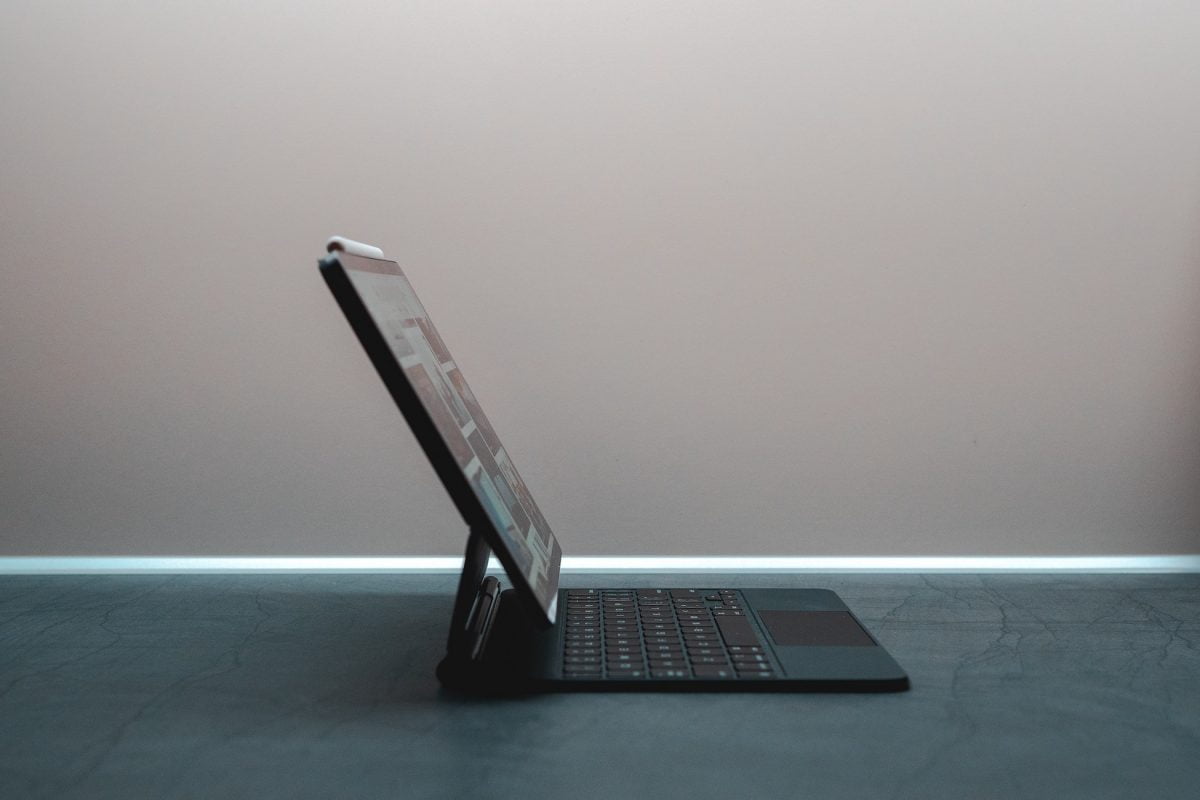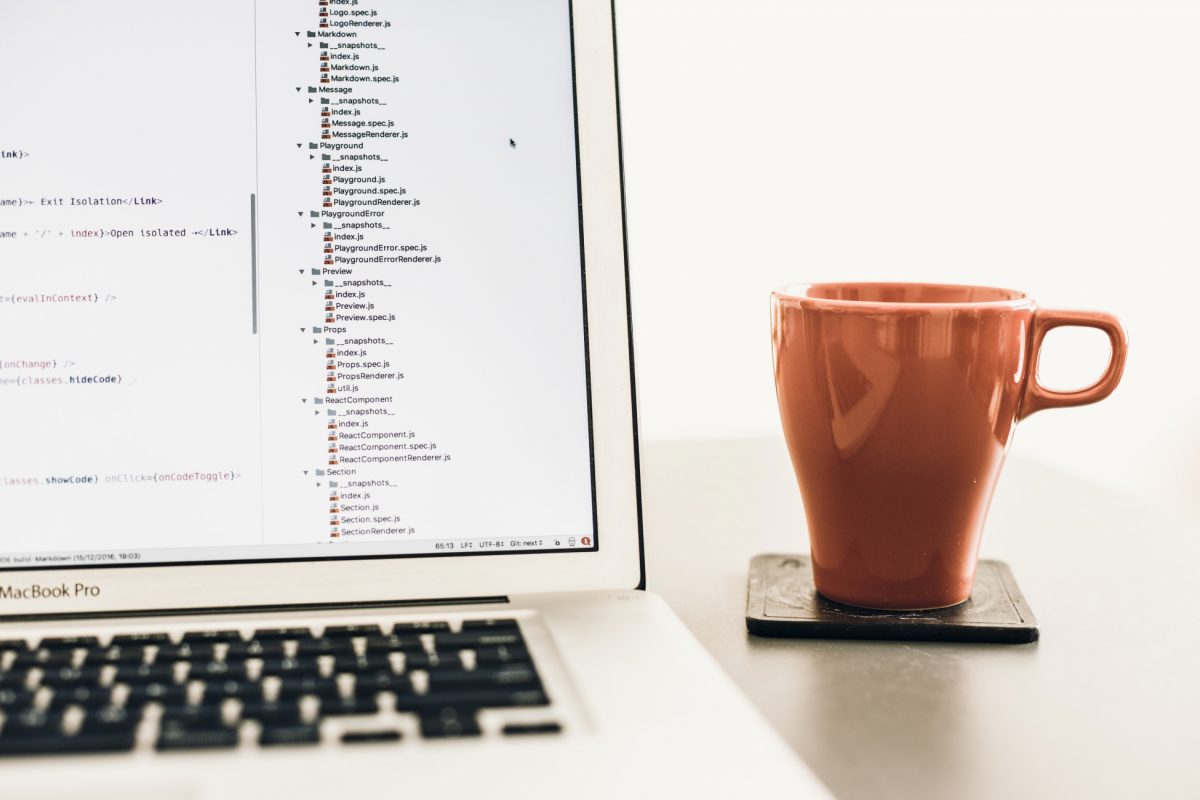Picture this: you’re browsing your favorite finance blog at midnight, double-tapping memes about avocado toast and student loans, when suddenly you stumble upon an article about finally ditching that pesky PMI on your FHA loan. It sounds like a secret level in a video game—one where you unlock financial freedom and get to keep extra cash in your pocket. Welcome to your ultimate guide on “How to Get Rid of PMI on a FHA Loan,” where we break down everything you need to know in a way that’s as refreshing as your favorite iced latte and as relatable as your go-to meme. Ready to level up your fiscal game? Let’s dive in!
How to Get Rid of PMI on a FHA Loan Table of Contents
Understanding FHA Loans and PMI
Why PMI on an FHA Loan Can Be a Financial Burden
Steps to Get Rid of PMI on Your FHA Loan
Alternative Strategies for Accelerating PMI Cancellation
Common Misconceptions and Pitfalls to Avoid
Resources and Community Support: Your Next Steps
Your Roadmap to a PMI-Free Future
Future-Proofing Your Financial Strategy
Integrative and Holistic Approaches FAQs: Your Questions Answered
Understanding FHA Loans and PMI
Before we jump into PMI removal tactics, let’s set the stage. An FHA loan, insured by the Federal Housing Administration, is designed to help first-time homebuyers (and those with less-than-stellar credit) secure financing. Sounds cool, right? However, these loans come with a catch: PMI, or Private Mortgage Insurance, which is like that subscription service you forgot about—small, annoying, and in many cases, totally unnecessary once you hit a certain milestone.
PMI protects lenders if you miss a payment, but for borrowers, it’s like paying an extra fee for the privilege of buying a home without a hefty down payment. For millennials and Gen Zers, who value financial freedom and smart money moves, PMI can feel like an unwelcome party crasher at your financial fiesta.
So, why is PMI necessary? Typically, if your down payment is less than 20% of the home’s purchase price, lenders require PMI to mitigate their risk. While FHA loans already come with some insurances, they still require mortgage insurance premiums (MIP) which can feel similar to PMI. The good news is, under certain conditions, you might be able to eliminate or reduce these extra charges over time.
Why PMI on an FHA Loan Can Be a Financial Burden
Let’s break it down in terms that resonate with your inner money-savvy self: every extra dollar counts. PMI and MIP can significantly increase your monthly mortgage payments, chipping away at your ability to save for that dream road trip, an emergency fund, or even a spontaneous weekend getaway. Financial independence means making every penny work for you, not lining someone else’s pockets.
For many younger homeowners, competing against the rising costs of living and the pressure to invest wisely, an extra insurance fee can feel like a sneaky tax. Moreover, over the life of a loan, these premiums add up to thousands of dollars. That’s money that could have been reinvested in your future, whether through additional savings, investments, or even a well-deserved micro-adventure.
On top of that, the insistence on carrying PMI can make refinancing a more complicated process down the line. You might find yourself stuck in a loan with unfavorable terms because you haven’t managed to rid yourself of extra insurance costs. Understanding the financial weight of PMI is the first step towards taking back control of your mortgage—and your future.
Steps to Get Rid of PMI on Your FHA Loan
Now that we’ve tackled the why, let’s get into the how. There’s a whole arsenal of strategies you can deploy to kick PMI to the curb. Whether you’re rethinking your refinancing options or planning a savvy home value reappraisal, we’ve got the playbook to help you on your journey.
1. Understand Your Loan Terms
The first move on this money-saving mission is to grab your loan documents and read the fine print. FHA loans have their own specific rules about mortgage insurance premiums (MIP), which can include both an upfront premium and an annual premium. Knowing exactly how your loan is structured is essential. Some loans suspend MIP after reaching a certain duration or when the remaining balance reaches a particular threshold. Familiarizing yourself with these details gives you a roadmap for when and how you might be able to get rid of additional premiums.
2. Reappraise Your Home’s Market Value
Have you been diligently remodeling your kitchen or adding modern touches that boost your home’s appeal? It might be time to get a professional appraisal. A higher market value could mean you have more equity in your home than what was originally calculated, which might help you qualify for PMI cancellation. If your home’s current value has climbed past a critical point, talk to your lender about re-evaluating your loan.
Real talk: sometimes the market gives your property that glow-up, making it possible to remove PMI earlier than expected. It’s like realizing that your favorite band is playing free shows in your neighborhood—you simply can’t miss that opportunity!
3. Increase Your Equity Through Additional Payments
One of the most effective ways to boost your home equity is to start paying a little extra on your mortgage. By chipping away at the principal, you’re not only reducing your overall loan balance faster, but you’re also inching closer to that coveted 20% equity milestone. Think of it as paying off a subscription in advance to score a discount—you’re investing in your own financial freedom.
Even modest extra payments can make a big difference over time. It might not feel glamorous, but every additional payment is like a power-up in your personal finance video game, inching you closer to living loan-free.
4. Consider Refinancing Your FHA Loan
Refinancing can be a game changer. Switching from an FHA loan to a conventional loan might offer more favorable terms when it comes to mortgage insurance. With conventional loans, PMI can be canceled once you reach the 20% equity threshold, whereas FHA’s MIP rules can be more rigid and long-lasting.
When considering refinancing, evaluate the costs involved (like closing fees) and compare them with the potential savings. If the numbers add up, refinancing might be your ticket out of the perpetual PMI loop. Just remember to shop around—like dating apps but for lenders—to find the best deal that suits your financial situation.
5. Explore Piggyback Loans
If you’re not quite there with your down payment and want to avoid PMI altogether, a piggyback loan (often called an 80-10-10 loan) might be a solution. This method involves taking out a second loan to cover part of the down payment, thereby reducing the primary loan amount to below 80% of the home’s value. This approach can sometimes eliminate the need for PMI.
However, keep in mind that piggyback loans come with their own costs and risks. You’ll need to weigh the benefits against the potential drawbacks, such as higher interest rates or additional fees. For many savvy homeowners, though, the piggyback strategy turns out to be a worthwhile tactic that well aligns with their goals of lower monthly expenses.
6. Monitor Your Loan’s Progress
Just like tracking your fitness goals, staying on top of your mortgage balance and periodic equity evaluations can be very rewarding. Regularly check your statements and use online tools to see how your principal balance shrinks over time. This habit will not only motivate you to stick with your extra payments but also give you a clear picture of when you might be eligible to cancel PMI.
Many lenders offer online dashboards where you can monitor your progress. If your home’s value appreciates or you’re paying down the principal faster than expected, you might be surprised when the opportunity to remove PMI comes knocking.
Questions to Ask Your Mortgage Lender & Tips for Success
When you’re ready to discuss PMI removal with your lender, it’s important to arm yourself with the right questions and a clear strategy. A little bit of homework can make all the difference in negotiating better terms.
- What are the specific conditions under which PMI/MIP can be canceled? — Ensure you know if your loan qualifies for cancellation based on equity thresholds or time elapsed.
- Is my home’s value up for reappraisal, and can that work in my favor? — Some lenders allow re-evaluations that might prove you’ve reached the required 20% equity.
- What additional fees or penalties could be incurred during the cancellation process? — Get the full breakdown so there are no surprises later.
- Are there refinancing options available for someone in my financial situation? — Even if you’re content with your current rate, exploring refinancing can sometimes result in a more favorable mortgage insurance arrangement.
These questions not only show that you know your stuff but also signal to your lender that you’re serious about optimizing your financial plan. Remember, knowledge is power, and being well-informed can often lead to better terms or even special programs offered by your lender for proactive homeowners.
Alternative Strategies for Accelerating PMI Cancellation
Sometimes, the direct route isn’t enough to fast-track your financial goals, and you might have to think outside the box. Here are a few alternative strategies to consider:
Make Lump-Sum Payments
If you come into a little extra cash (bonus from work, tax refund, or even an unexpected windfall from a side hustle), consider applying it directly to your principal. Lump-sum payments can accelerate your reach to that magical 20% equity threshold, potentially allowing you to cancel PMI sooner than expected.
It’s like hitting the fast-forward button on your mortgage payoff journey—a smart move that gives you more financial breathing room in the long run.
Consider a Home Improvement Investment
Believe it or not, strategic home improvements can increase your property’s value, which may help you eliminate PMI faster. Focus on renovations that boast high returns on investment—kitchen upgrades, energy-efficient windows, or even that sleek new bathroom design can potentially boost your equity.
Just make sure the costs of those improvements don’t outweigh the benefits. Doing your research and talking to professionals can ensure that your investments work double duty: enhancing your living space and lowering your monthly mortgage costs.
Stay on Top of Market Trends
The housing market isn’t static—just like trends in your favorite social media platforms. Keep an eye on market conditions and appraisals in your area. If the local market is booming, your home may have appreciated significantly, which could make you eligible for PMI cancellation faster than you expected.
Use online tools and local real estate resources to stay updated, and don’t hesitate to ask your lender if a recent market surge might be in your favor.
Consult Financial Advisors or Mortgage Brokers
Sometimes, professional guidance can reveal opportunities you hadn’t considered. Mortgage brokers and financial advisors can offer insights into refinancing options, alternative cancellation methods, or even creative restructuring of your mortgage. Their expertise could help you navigate complex eligibility criteria and find a solution tailored to your unique financial situation.
It’s worth investing time in a consultation—the right advice can sometimes save you thousands in the long haul.
Common Misconceptions and Pitfalls to Avoid
When it comes to PMI on FHA loans, there’s no shortage of myths and misunderstandings that can trip you up. Let’s set the record straight with some common misconceptions and the pitfalls you should avoid.
Misconception #1: PMI Is Mandatory for Life on an FHA Loan
Many folks believe that once you’re locked into an FHA loan, the extra insurance fees are here to stay forever. While FHA loans often come with longer timelines and unique cancellation rules compared to conventional loans, that doesn’t mean you’re doomed to pay PMI indefinitely. Depending on your loan type, payment history, and home equity, there may be opportunities to reduce or eliminate these costs.
Misconception #2: Refinancing Is Always a Hassle
Sure, refinancing requires some legwork—and yes, a few fees—but it’s far from the nightmare it’s sometimes made out to be. Many modern financial institutions offer streamlined refinancing options specifically designed for borrowers looking to cancel PMI. Compare costs, ask questions, and do your homework; you might find that a fairly simple refinancing move can open up a world of savings.
Misconception #3: Making Extra Payments Doesn’t Really Impact PMI Cancellation
If you think extra principal payments are just a drop in the bucket, think again. Every additional dollar you put toward reducing your balance can help you reach that critical equity threshold faster. It’s a long-term strategy that can pay off big—literally.
Misconception #4: All Lenders Follow the Same PMI Cancellation Rules
Not all lenders are created equal! Policies regarding mortgage insurance can vary widely. It’s essential to clarify your lender’s specific policies and find out if there are special programs or conditions that could work in your favor. Just as you wouldn’t assume every streaming service has the same library, don’t assume your lender’s rules are universal.
Avoid these pitfalls by doing your own research, consulting trusted financial sources, and being proactive about monitoring your home equity. Armed with the right knowledge, you can sidestep these common mistakes and streamline your path out of unnecessary fees.
Resources and Community Support: Your Next Steps
Embarking on a journey to eliminate PMI from your FHA loan is not just about crunching numbers—it’s also about connecting with a community of like-minded homeowners who are all in on the mission for financial freedom. Whether you’re a seasoned homeowner or a first-timer navigating the maze of mortgage jargon, there are plenty of resources out there crafted just for you.
Start by checking out reputable financial websites, mortgage calculators, and home improvement blogs that break down the technical stuff into bite-sized, relatable info. Online forums and social media groups (think Facebook, Reddit, and even Instagram) are treasure troves of first-hand accounts and insider tips from people who’ve been there and done that.
Don’t hesitate to reach out to local housing counseling services or financial advisors, too. They can offer personalized guidance and help you create a tailored action plan to cancel your mortgage insurance faster. These communities are like your financial squad—ready with advice, support, and maybe even a few laughs when the mortgage process starts feeling like a never-ending homework assignment.
Whether it’s learning more about home equity through detailed webinars or tapping into a local workshop on financial planning, your next steps are all about empowering yourself with knowledge and a network of support. Remember, when it comes to making smarter financial choices, community and education go hand in hand.
Your Roadmap to a PMI-Free Future
Every step you take to understand and manage your FHA loan is a step toward financial liberation. From reappraising your property value to making strategic extra payments, each move is a calculated strategy to help eliminate PMI and build a stronger, debt-reduced foundation.
Start by engaging in a detailed discussion with your lender—the process might seem daunting, but it’s really just about opening up a channel of communication. Ask the right questions, explore your refinancing options, and assess if piggyback loans or lump-sum payments could fast-track your progress.
Remember, this isn’t just about saving a few extra dollars each month; it’s about reclaiming your financial freedom. Imagine redirecting those saved dollars into investments, experiences, or even a spontaneous trip with your friends. That’s the essence of smart financial planning in our modern age—investing in yourself while taking control of your money.
Each move you make is part of a broader strategy to empower you financially—one where you’re not just a borrower, but an active participant in crafting your future. As the pieces come together, you’ll find that every milestone brings a rewarding sense of achievement. So gear up, get informed, and let your journey to a PMI-free life begin with excitement and confidence.
PMI Removal Success Stories
It helps to hear real-life tales of triumph—stories that prove you’re not alone in this quest. Consider Lisa, a young professional who refinanced her FHA loan after noticing her home value had soared, thanks to recent renovations and a booming market. By paying extra each month toward her principal, she managed to cross that 20% equity threshold ahead of schedule, ultimately canceling PMI and saving thousands over the life of her loan.
Then there’s Mark, an enterprising entrepreneur who dived into a thorough conversation with his lender about his options. After consulting with financial advisors and exploring refinancing alternatives, Mark switched to a conventional loan that offered the flexibility to cancel PMI once he hit his equity goal. His smart strategy meant more cash flow for investing in his business dreams.
These success stories are not magic—they’re the product of determined homeowners taking proactive steps. They remind us that the journey to eliminating unwanted expenses is all about diligence, smart planning, and a willingness to engage with every available resource.
Let these real-life examples motivate you and serve as a reminder that with the right strategy and determination, you too can break free from the confines of unnecessary mortgage insurance.
Future-Proofing Your Financial Strategy
Getting rid of PMI on your FHA loan is just one piece of a larger financial puzzle. As you power through your mortgage journey, think about future-proofing your financial strategy. This means staying updated on market trends, continuously educating yourself on changes in mortgage policies, and always keeping an eye out for opportunities to refinance or restructure your loans in a more beneficial way.
Adopt a mindset where every financial decision is a step toward long-term wealth-building. Use digital tools, smart budgeting apps, and community advice to keep your finances lean and agile. Your goal isn’t just to cancel PMI—it’s to create a financial ecosystem that works in your favor, allowing you freedom to invest, save, and live life on your terms.
The world of mortgage finance might seem complicated, but with perseverance and the right knowledge arsenal, you can navigate it like a seasoned pro. Future-proofing means being proactive about adjustments, understanding economic forecasts, and always staying adaptable to changes. Keep that inquisitive spirit alive, as it’s the very same quality that enabled you to make the savvy move of getting an FHA loan in the first place.
Integrative and Holistic Approaches FAQs: Your Questions Answered
We’re all about breaking down complexity into a conversation that’s relatable and engaging. Here are some frequently asked questions that address common concerns about eliminating PMI on FHA loans:
1. What exactly is PMI, and how does it apply to an FHA loan?
PMI, or Private Mortgage Insurance, is an extra cost that protects the lender if you default on your loan. For FHA loans, you face mortgage insurance premiums (MIP) that work similarly to PMI, particularly if your down payment was less than 20%.
2. When can I cancel PMI on my FHA loan?
Cancellation depends on several factors, including your loan-to-value (LTV) ratio, time elapsed, and specific lender rules. Often, once you reach a 20% equity threshold through payments or an appraisal, you may be eligible to cancel everything.
3. Is refinancing a viable option to eliminate PMI?
Absolutely. Refinancing from an FHA loan to a conventional loan often makes it easier to get rid of PMI once you’ve built sufficient equity. However, always compare costs and benefits before making a move.
4. How do lump-sum payments affect PMI cancellation?
Extra payments toward your principal reduce your overall balance, allowing you to hit that critical equity mark faster. It’s one of the most effective strategies to shorten the lifespan of PMI.
5. Are piggyback loans a good strategy for avoiding PMI?
Piggyback loans (like the 80-10-10 approach) can help if you’re looking to avoid PMI by structuring your initial down payment differently. However, weigh the potential risks and fees before moving forward.
6. What should I ask my lender about PMI cancellation?
Ask about the specific conditions for cancellation, the possibility of a reappraisal, and any fees or penalties associated with the process. Clarity here can save you a lot of time and money.
7. How does home improvement influence PMI removal?
Renovations that enhance your home’s value might increase your equity, potentially qualifying you for earlier cancellation of PMI. A well-thought-out improvement project can pay off in multiple ways.
8. Can a mortgage broker help me manage PMI better?
Definitely. Mortgage brokers or financial advisors can provide insights into refinancing options, innovative strategies, and other financial products that might better suit your needs.
9. How do changes in the housing market affect PMI cancellation?
A rising market can boost your home’s value, allowing you to reach the equity threshold sooner. Conversely, a declining market might delay PMI removal. Stay informed about local market trends to gauge your best options.
10. Is it possible to completely avoid PMI on an FHA loan?
With an FHA loan, mortgage insurance is typically required if your down payment is small. However, by strategically refinancing or increasing your equity quickly, you can minimize or eventually cancel these costs.
Your Journey to a PMI-Free, Empowered Future
Breaking free from PMI on your FHA loan isn’t just a financial maneuver—it’s a statement of independence. By taking proactive steps like reappraising your home’s value, making extra payments, or exploring refinancing options, you’re not only cutting out unnecessary fees; you’re investing in your future. This journey is all about forging a more secure financial foundation that empowers you to pursue your dreams without being weighed down by extra costs.
Think of this period as a major upgrade in the game of personal finance. Every bit of extra cash saved from canceling PMI is like a bonus round reward that you can reinvest in experiences, savings, or that passion project you’ve been meaning to start. Your commitment to smarter financial decisions sets you apart as a true boss in your own life.
As you navigate the road ahead, keep in mind that this guide is a dynamic blueprint—a living document that evolves with market conditions and your personal financial journey. Stay curious, ask questions, and never stop learning about the best strategies to optimize your mortgage and overall financial health.
So, here’s to your journey—a journey defined by smart choices, thriving equity, and a future free from the frustrations of unnecessary fees. Step forward with confidence and know that every move you make propels you closer to a life of financial freedom and unlimited potential.













